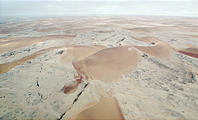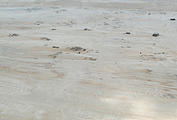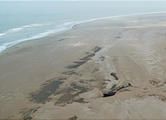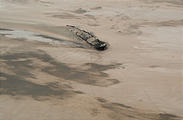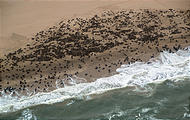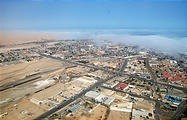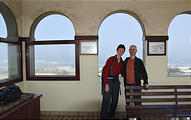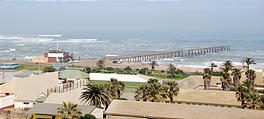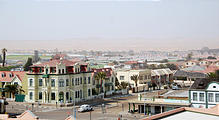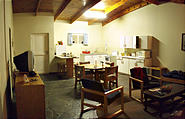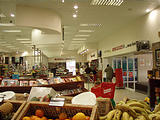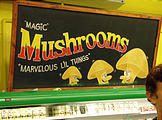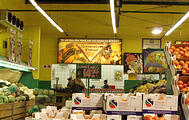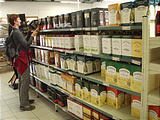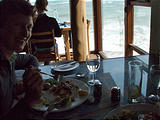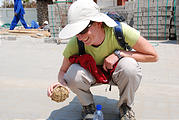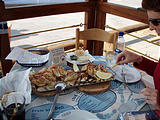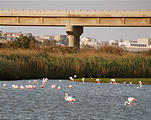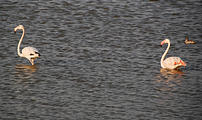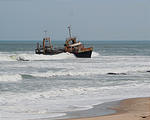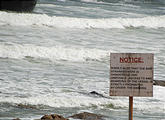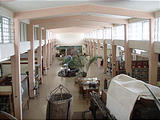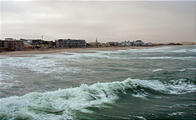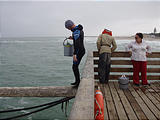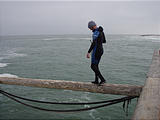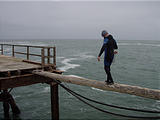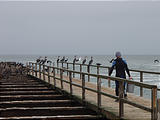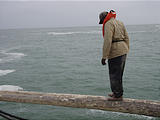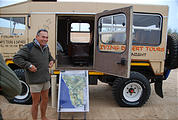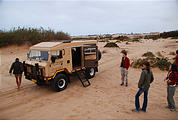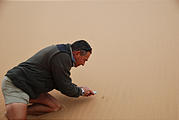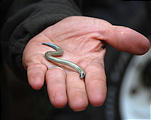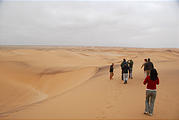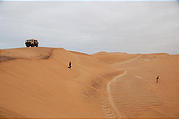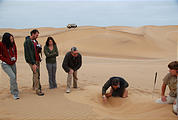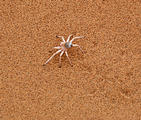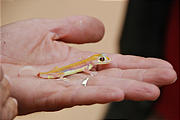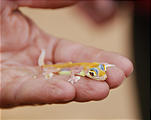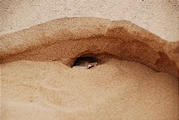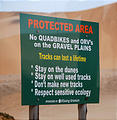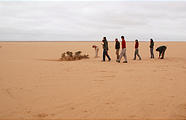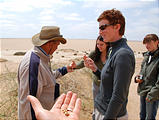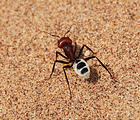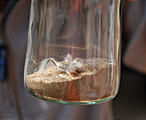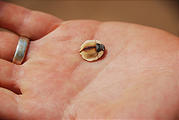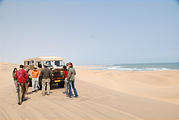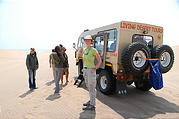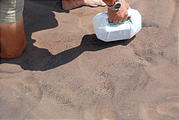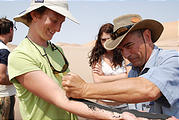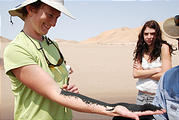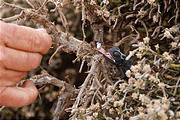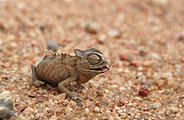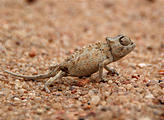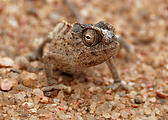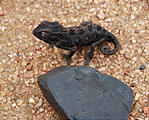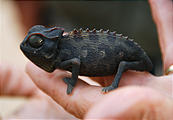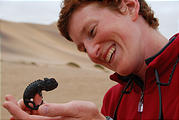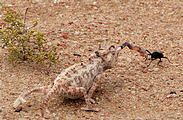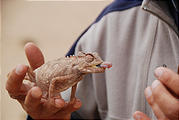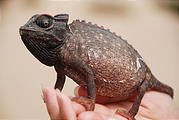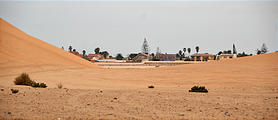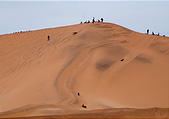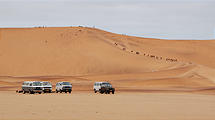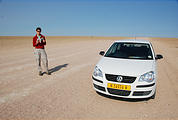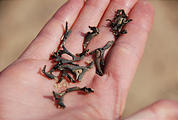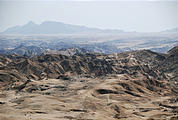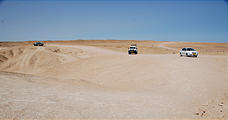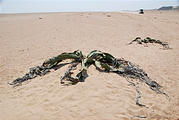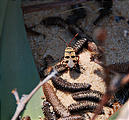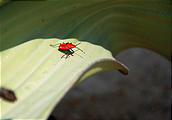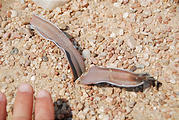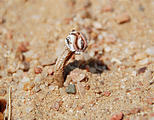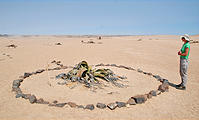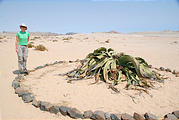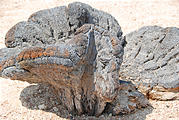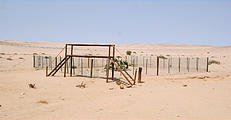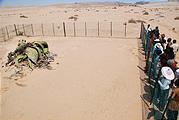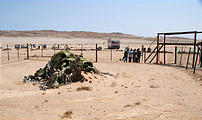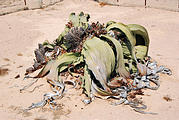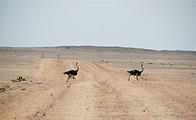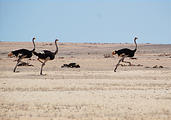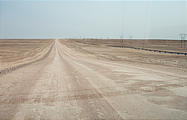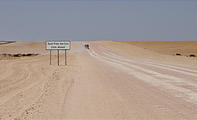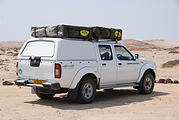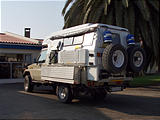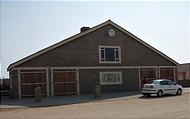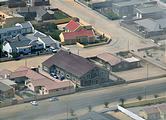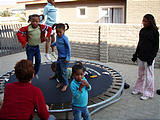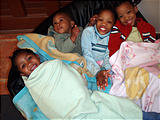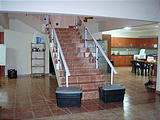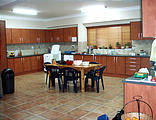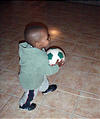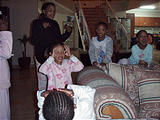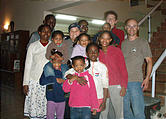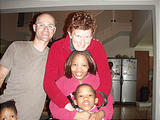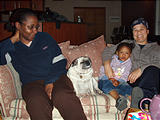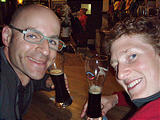Namibia: Swakopmund
Flying west to the coast, we could really see how this part of Namibia is all rolling dunes. From the air, we spotted old mining camps, shipwrecks, and huge colonies of seals. We arrived in Swakopmund, a foggy coastal town on the edge of the vast sandy desert.
Swakopmund
Swakopmund from the air, and from Woermann Tower.
In Swakopmund, we rented an apartment (Alte Brücke Resort ) so we could have a break from the regulated life of safari camps — shopping and cooking for ourselves, and exploring at our own pace.
Our apartment was right near the beach, where flamingos (some white and some pink) fed in the lagoon at the south end of town.
Shipwrecks still happen near Swakopmund, along the "Skeleton Coast".
The Swakopmund Museum
Lunch in our favorite lunch spot, the Village Cafe. The latest fad was an "espresso" drink made from the African red tea, rooibos.
We thought it was curious that many products were marketed using photographs of bare-chested native women. This ad for self-driving tours was posted in a men's restroom.
One day we walked out the jetty for a view of Swakopmund from the ocean. The jetty, built in the early 1900s, was halfway replaced in 2006. We walked out to the end of the new section, and looked out at the remaining dilapidated part of the old jetty extending onwards. We saw that there were two logs laid between the two sections of jetty, and we fantasized about how silly it would be to balance on those logs to walk further out. Just as we were laughing about this, a group of people arrived, and two of them did just that! A man in a wetsuit and another guy with nothing but a life jacket slowly crept their way out on those logs. They appeared to be a group of scientists doing some kind of water testing.
Tommy's Living Desert Tour
We spent a morning with Tommy and his Living Desert Tour of the dunes surrounding Swakopmund. Wow, what a great experience! Tommy was just bubbling with enthusiasm as he would run from his truck to check out some subtle perturbation of the otherwise featureless sand, dig furiously, and pull out a little desert creature! We learned that the dunes were full of life, from spiders and beetles, to skinks, geckos, snakes, and chameleons.
Tommy used a big magnet to demonstrate to us the iron found in the orange sand.
The chameleons were some of our favorite creatures. We fed them plenty of bugs, trying to catch their tongues in action. They would change color between black and tan, depending on their location.
It seemed that people in Swakopmund would come out to the dunes to exercise their dogs!
Other potential dune activities included sandboarding — riding down the dunes on snowboards. No lifts though.
Moon Landscape
With our rental car (driving on the British side of the road), we drove the Moon Landscape Tour loop not far outside of town. For many parts of this area, the only apparent living things were lichens.
This tour is famous for the welwitschia, a strange desert plant vaguely related to pine trees, which grows only two convoluted leaves from a tiny stub of a trunk. The plants are hosts to various colorful insects. We saw welwitschias of all sizes.
The largest and oldest welwitschia was protected by a fence, where we were met by a group of local students on a field trip.
We also checked out the other curious plants near the giant welwitschia.
The road wasn't paved, except for the occasional signposted "Dust Free Section".
A common site in tourist areas — a rental pickup truck (called a "backie" in Afrikaans) with a rooftop tent. I suspect that's the best place for a tent when there are large carnivores roaming about. Other people drove their own customized vehicles from South Africa.
Mark 9:37 Children's Home
We visited the Mark 9:37 Children's Home for orphans started by Laura's high school friend Kristina.
Swakopmund, though now mainly an Afrikaans (& English) speaking town, traditionally had some German culture. We dropped into a German pub for some dark beers and conversation on our last night in town.

